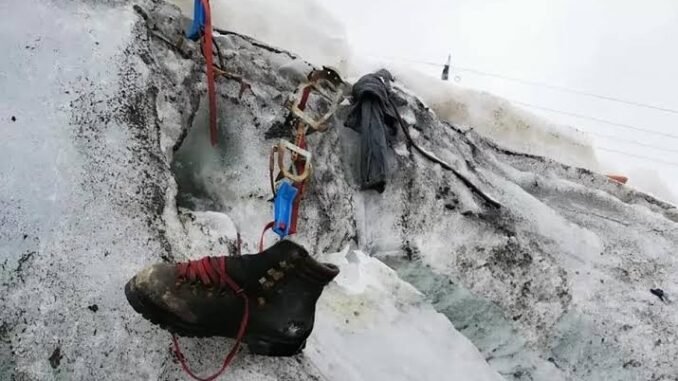
In melting ice, the remains of a German mountain climber who vanished over 40 years ago while traversing a glacier close to the Matterhorn mountain have been found. According to police on Thursday, two climbers discovered the remains on July 12 while trekking near the Theodul Glacier in Zermatt, Valais, southern Switzerland. A boot, crampon, and other items that were later determined to be the German climber’s were discovered by glacial melting.
“DNA analysis enabled the identification of a mountain climber who had been missing since 1986,” a statement from Valais canton police said. “A 38-year-old German climber was reported missing in September 1986 after failing to return from a hike.” The identify of the climber and the circumstances surrounding his death were not disclosed by the police. An image of the finding site was released, displaying a lone hiking boot with red laces protruding from the snow.
According to authorities, scientists connected the remains to the climber’s 1986 disappearance after forensic investigation was done on them at Valais hospital in the town of Sion. According to some estimates, at least 300 people have disappeared in the Alps in the past century. As a result of the climate problem, the bodies of some persons who vanished have been found as glaciers recede. The remains of two Austrian soldiers who lost their lives in World War I were discovered in the Italian Alps nine years ago, close to the little ski town of Peio.
Experts said last year that the rate of glacier melt in Switzerland was the worst since records have been kept more than a century ago. Six percent of the glaciers’ remaining volume was lost, which is almost twice as much as the previous record set in 2003. According to a 2022 study, the amount of Swiss glaciers decreased by 50% between 1931 and 2016 and by another 12% between 2016 and 2021. Even by those criteria, last year was considered remarkable because of the rapid melting caused by a winter with little precipitation and the subsequent deposition of flying sand on snow and ice.

Be the first to comment